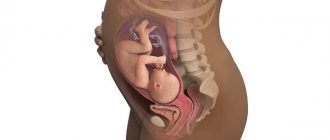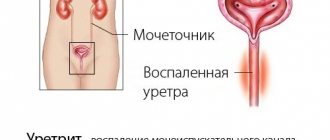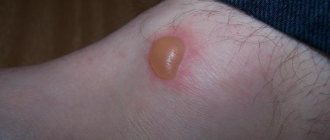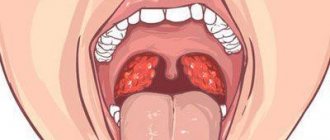So, why do children have stomach ache - the main reasons:
- Colic. As a rule, abdominal pain in newborn babies is caused by this very reason. The baby draws in his legs, screams and “throws about” for 10-30 minutes. Usually, special children's tea and mother's warmth help.
- Intestinal obstruction . In this case, the pain manifests itself as blood in the stool, nausea and vomiting (age - about 5-9 months). You cannot do without an urgent consultation with a surgeon.
- Accumulation of gases and bloating . When the intestines become bloated, abdominal pain occurs and sometimes nausea occurs.
- Gastroenteritis . In addition to paroxysmal dull pain, it is accompanied by vomiting and fever. Diarrhea then joins the symptoms. There is an increase in pain after eating. What a newborn baby's stool can tell you - let's study the contents of the diaper!
- Appendicitis . It usually occurs in 1 in 6 children. And until two years of age, as a rule, it does not worsen. Symptoms: loss of appetite and weakness, nausea and fever, pain in the navel or on the right side of the abdomen (however, with appendicitis, the pain can radiate in any direction). In this case, urgent surgery cannot be avoided. The danger of appendicitis is that severe pain usually manifests itself already at the stage of peritonitis, which is extremely life-threatening.
- Crick . This phenomenon occurs during intense physical exertion, as well as after severe coughing or vomiting. It usually appears when walking or trying to sit up straight. The nature of the pain is sharp and acute. At the same time, both appetite and general normal condition are preserved.
- Pyelonephritis . This disease occurs more often in girls, manifesting itself as acute pain in the lower back or side, as well as in the lower abdomen, fever and frequent urination. You cannot do without examination and full treatment. Of course, it must be timely.
- Inflammation of the testicles . As a rule, after a bruise, testicular torsion or hernia, boys feel pain radiating from the scrotum directly to the lower abdomen.
- Jaundice . With infectious inflammation of the liver, which occurs through a virus ingested with food, the sclera of the eyes turn yellow, the urine darkens, and severe pain occurs in the liver area. The disease is dangerous and contagious.
- Constipation . In this case, bloating and colic are observed. How to give an enema to a newborn baby correctly?
- Intolerance to certain foods . For example, lactose. Symptoms: nausea and diarrhea, bloating and abdominal pain.
- Worms (usually roundworms) . In such a situation, the pain becomes chronic, and in addition to it, headaches, bloating, and teeth grinding at night appear.
If your child has a stomach ache | Doctor's advice
Abdominal pain is a common symptom in babies, children and adolescents, which causes a lot of anxiety for parents.
The peculiarity of pain in young children is that the child cannot tell what hurts and where; in children under one year old, pain can be accompanied by different types of crying, and parents cannot always understand what is happening.
It may seem to them that the baby is hungry, cold, or just wants to be held in their arms, but in fact the reason for crying is precisely the feeling of pain.
Acute abdominal pain in children does pose a diagnostic dilemma, even for physicians.
Although many cases of acute abdominal pain are benign, caused by transient and potentially harmless causes, such as the accumulation of gases, stool, smooth muscle spasms, overstretching the walls of internal organs, some causes are potentially dangerous or life-threatening and require prompt diagnosis and treatment to minimize the development of the disease and its possible complications.
What can cause abdominal pain in a child?
Numerous disorders can cause abdominal pain. According to statistics:
- the most common therapeutic cause is gastroenteritis,
- the most common surgical cause is appendicitis.
In most cases, abdominal pain can be diagnosed by assessing the complaints of the parents, the child (if he is already talking) and a diagnostic examination. The child's age is also a key factor in assessing the possible cause of problems, as the incidence and symptoms of various diseases vary significantly depending on the age of children.
In acute surgical pathology of the abdominal organs, abdominal pain usually precedes vomiting, while in therapeutic diseases everything happens in the reverse order: vomiting appears first, and then abdominal pain. Diarrhea is most often associated with gastroenteritis (including viral nature) or food poisoning (toxic infection). Appendicitis should be suspected in any child with lower right abdominal pain.
Signs indicating the need for emergency surgery. Most often include:
- significant tension in the muscles of the anterior abdominal wall (the abdomen itself),
- severe bloating of the tummy,
- severe abdominal pain and increased pain when you press your fingers on the abdomen
- increased abdominal pain when the child's arms are suddenly lowered down
In many cases, the cause of the pain is not obvious, and doctors actively monitor the child's condition, including repeat tests such as ultrasound, endoscopy, x-rays, and MRI if a surgical cause is suspected.
What types of abdominal pain are there?
Pain in a child's abdomen can be caused by irritation of the sensory nerves of internal organs (visceral pain), irritation of the peritoneum, or referred pain from other organs. The nature of the pain can tell parents and, especially, the doctor what is happening to the child.
Visceral pain occurs when irritants impact an internal organ such as the stomach or intestines.
Tension, stretching and poor circulation stimulate sensitive nerve endings and are transmitted in the form of pain along nerve fibers to the spinal cord.
Since the irritated nerves enter the spinal cord at several levels and lack the “insulating” myelin sheath, the pain is usually dull, vague in location, and most often manifests itself as pain in the middle of the abdomen.
- The pain is felt as “in the upper abdomen” if the pathological process is located in the lower esophagus or in the stomach.
- Pain “around the navel” is felt if the small intestine is irritated
- Pain in the “lower abdomen” is felt if there are problems in the colon.
Pain due to irritation of the peritoneum occurs when it is exposed to various factors, such as stretching, inflammation or impaired local circulation.
Pain resulting from ischemia (compression), inflammation or stretching of the peritoneum is transmitted through myelinated (sheathed) nerve fibers, which very accurately convey the location of pain. Therefore, pain from irritation of the peritoneum is usually acute, severe and limited in location, and coughing and movement can intensify it.
Such pain occurs in cases where inflammation has spread beyond the organ and began to affect the abdominal cavity and peritoneum, as, for example, with appendicitis, peritonitis, perforation (breakthrough) of a stomach or intestinal ulcer.
Referred pain , although it has many of the characteristics of pain from peritoneal irritation, is caused by damage to an organ outside the abdominal cavity.
This is due to the fact that several organs may share some of the same nerve fibers, and when the pain impulse reaches the brain, its perception is disrupted.
A classic example is the pain experienced by a child with pneumonia localized in the lower lobes of the lungs. At the same time, this pain is felt as if “the stomach hurts.”
What diseases cause abdominal pain?
- Diseases of the gastrointestinal tract
| Gastroenetritis | Appendicitis |
| Mesenteric lymphadenitis | Constipation |
| Peritonitis | Abdominal injury |
| Diverticula | Intestinal obstruction |
| Stomach ulcer | Food poisoning |
| Inflammatory bowel diseases | Lactose intolerance |
| Peritonitis | Stomach ulcer |
- Diseases of the liver, spleen and bile ducts
| Hepatitis | Splenic infarction |
| Cholelithiasis | Splenic rupture |
| Cholecystitis |
- Diseases of the lungs and pleura
- Diseases of the reproductive system
| Testicular or ovarian torsion | Hematocolpos |
| Endometriosis | Threat of miscarriage |
| Ectopic pregnancy | Ovulatory syndrome |
| Dysmenorrhea | Pelvic inflammatory disease |
- Hematological diseases
| Sickle cell anemia | Hemolytic uremic syndrome |
| Porphyria |
| Infantile colic (“gas”) | Hypoglycemia |
| Functional pain | Angioedema |
| Metabolic disorders | Acute adrenal insufficiency |
| Diabetic ketoacidosis | Mediterranean fever |
| Stress | Depression |
Signs of abdominal pain in newborns
Children under 3-4 years old cannot complain of abdominal pain. In addition, the pain symptom may not be sharp; the pain may be aching, intermittent (disappearing). How to suspect that a small (especially a newborn) child has a stomach ache:
- The baby is crying. With sharp pain, crying turns into a scream; with pulling, aching pain, the crying can be quiet, monotonous, exhausting the child. The main sign: the crying does not stop in any usual way: eating, picking up the child, changing the diaper, trying to distract the child from crying, trying to cover him (gentle warmth).
- The baby is fussing and worrying clearly more than usual
- Pulls legs towards stomach
- Eating poorly or refusing to eat at all
- Has difficulty falling asleep and often wakes up or cannot fall asleep at all.
How can parents recognize the cause of abdominal pain?
There are many reasons why children may have stomach pain.
- Banal overeating: Often pain occurs simply because children overeat. For example, on holidays or when visiting grandparents, children eat too much sweets. Gas formation when digesting carbohydrates or fiber or an increase in blood sugar levels can cause abdominal pain.
- Holiday drinks: drinking sodas and lemonades, which may not be compatible with other foods and often cause indigestion and distension of the intestinal walls. Spicy and fatty foods, such as chips, can cause stomach upset.
Often abdominal pain is caused by constipation. In this case, children complain of pain around the navel. If you ask them when the last time they went “big”, it turns out that it was a long time ago. Ask the child to go to the toilet, and find out if he succeeded, whether the stomach continues to hurt if the child has had stool. With a viral infection, abdominal pain lasts at least a day before the child begins to vomit and have diarrhea.
Psychosomatic abdominal pain
At the beginning of the school year, many children experience abdominal pain. The pain comes and goes and is often localized around the navel. Most often, these are psychosomatic pains that arise as a bodily expression of stress.
Yes, oddly enough, for a child the beginning of the school year is stressful, because the daily routine, diet, and mental and physical stress increase radically.
Since children cannot react to their worries and fears before school, all mental problems result in abdominal pain.
Therefore, if a child often talks about “strange” temporary pains that appear and disappear, and at the most inopportune times, do not consider this as a whim, pay attention. Ask what worries the child, make sure that everything is in order with his school meals, as well as with his psychological state at school.
Appendicitis
The most common serious cause of abdominal pain that should be of concern is appendicitis. Pain in the right lower abdomen may indicate appendicitis. In this case, the child is not able to actively move (run, jump or even walk); he tries to lie still, in a “forced” position, trying not to touch the right half of the abdomen.
How long does abdominal pain last and what to do about it?
The duration of pain depends on its cause. For harmless causes, the pain usually goes away or subsides after two to three hours. The first thing you need to do with your child when he has abdominal pain is to put him to bed.
Quite often, in a lying position, if the child does not focus too much on the pain, he will quickly get better. Sometimes lightly stroking the abdomen clockwise can also relieve the condition.
Avoid giving your baby solid foods and only drink a few sips of clean water if your baby is vomiting. If you continue to drink water as usual, the vomiting will continue and the abdominal pain will intensify. If your child hasn't gone to the bathroom in a while, have him sit on the toilet and see if bowel movements help relieve the stomach pain.
If your child has stomach pain due to stress or anxiety, be sure to talk to your child about what is happening and then tell officials at school about these problems. Talk to the teachers, talk to the principal, see if you can solve the problem that was causing your child's stomach pain.
We do not recommend giving medications for cramps unless you know exactly what is causing the problem. If it is clear that the cause of the pain is constipation, you can give your child anti-constipation medicine.
IMPORTANT! If the cause of the pain is unknown, the child should not be given painkillers. First you need to see a doctor so that he can make a diagnosis and prescribe treatment.
When should you call the doctor on duty?
- the child literally screams or writhes in severe pain
- the pain is severe and lasts more than an hour
- the pain is moderate, but does not stop for more than two hours
- if a boy's pain spreads to the scrotum
The doctor will determine if an ambulance is needed to take the child to the children's hospital emergency room for further evaluation.
In what cases is it necessary to call an ambulance?
Call the doctor right away if your child has any of the following symptoms:
- The baby is less than three months old and has diarrhea or vomiting
- Abdominal pain accompanied by constipation or vomiting
- If you have abdominal pain, vomit blood or find blood in your stool
- Obvious sharp pain in the right side of the abdomen
- Sharp pain limited to one part of the abdomen
- Pain or tenderness increases when pressing on the abdomen
- A swollen belly or a belly that feels hard to the touch
- Groin pain accompanied by testicular tenderness and swelling
- Abdominal pain accompanied by fever
- Do you know for sure that the child had an abdominal injury?
The most important thing: if you suspect that your child has a stomach ache, do not self-medicate, do not delay. Acute conditions in children develop very quickly, sometimes almost at lightning speed. The longer a child endures pain, the more difficult it is for a doctor to examine him and make a diagnosis. Pain is a threatening signal that there really is a problem with the body.
It is not the pain as such that is dangerous, but the complications of the diseases that caused it. Unfortunately, they are the ones who pose the greatest danger to the child’s life. It is much easier to make a timely diagnosis of appendicitis and eliminate it than to treat one of its severe complications - peritonitis.
It is better to call a doctor and make sure that everything is in order than to hesitate, hope that it will “go away on its own,” and put the child at great risk.
Source: https://onnispb.ru/esli-u-rebenka-bolit-zhivot/
In what cases is consultation with a specialist and calling an ambulance mandatory?
- Pain that persists for more than 3 hours before the age of 5 years, tearfulness and restlessness of the child.
- Sudden pallor and weakness along with abdominal pain, as well as loss of consciousness.
- Severe abdominal pain after a fall or blow to the stomach.
- Increased temperature accompanied by abdominal pain.
- Pain outside the umbilical area.
- Abdominal pain in the middle of the night.
- The pain is accompanied by severe diarrhea.
- Refusal of water and food due to abdominal pain.
- Repeated vomiting or severe nausea accompanied by pain.
- Lack of stool - and abdominal pain.
- Frequent pain that recurs regularly over several weeks/months (even in the absence of other symptoms).
- Frequent abdominal pain and weight loss (or developmental delays).
- The appearance, in addition to pain, rash or inflammation of the joints.
My child has eaten too much and his stomach hurts, what should I do?
Intestines » Questions » Child has overate, stomach hurts, what to do
New Year is a family holiday, a winter holiday, and also a holiday of the belly. And every time we crawl away from the table, we swear to ourselves that we will never, ever overeat like that again. And if we, seemingly adults and responsible people, are so little able to control ourselves, then what can we say about children?
They also overeat during the New Year holidays. And if in an adult the consequences may be limited to not feeling very well, in children they are usually much more pronounced.
Symptoms of overeating in children:
- nausea,
- vomit,
- abdominal pain,
- loose stools,
- lethargy.
And the most important thing is an objective assessment. Remember how many sweets and tangerines the baby ate. Don’t set the standard for yourself - it’s better to focus on the child’s standard portion. If it is greatly exceeded, the cause of the malaise is most likely due to overeating.
Treatment tactics for overeating in children
Usually, the symptoms of overeating do not last long; the very next day the baby will feel almost healthy. However, in the first few days it is better to keep him on a moderate diet: - limit the consumption of sweet and sour foods, - exclude fatty and spicy foods,
- exclude dairy for at least three days.
When the above symptoms are a reason to urgently consult a doctor
The main rule is no panic. Carefully monitor the child's condition, and if the situation goes beyond the norm, do not hesitate to contact a doctor immediately.
The most common cause of illness in children is abdominal discomfort. They occur at any age and can be caused by various factors, so only a qualified pediatrician can accurately determine the nature of the pain.
What should parents do until the doctor arrives?
- Refrain from taking painkillers and antipyretics (unless you are a doctor who can conduct minimal diagnostics). These drugs can further harm the child’s body and also interfere with diagnostics (“blur the picture”).
- Find out if the child has constipation.
- Postpone lunch/dinner . You can't feed him now.
- Give the baby plenty of water. For vomiting and diarrhea, use special solutions to restore water-salt balance. Or still water (lemonade, juices and milk are prohibited!).
- Give your child a product based on simethiconeif the cause is bloating.
- It is not recommended to place a heating pad on your stomach! With any inflammatory process, it can sharply provoke a deterioration of the condition.
- You should also not give your child an enema until the cause of the pain is determined and a doctor recommends it.
- If your tummy hurts, your temperature rises, and vomiting or watery/smelly diarrhea begins, get ready to treat an intestinal infection (most often this is what is hidden under such symptoms.
- Monitor the temperature - if there are sudden changes, turn it down.
Etiology
If a child complains of pain in the stomach, this can be caused by a variety of reasons, both physiological and pathological. It is worth noting that in babies who have not yet turned one year old, the appearance of pain on palpation in the stomach area is quite normal, but only if it is not accompanied by other clinical manifestations. In the vast majority of cases, this is due to the process of formation of the gastrointestinal tract.
However, there are several other reasons for this symptom to occur in infants, for example:
- lactose intolerance;
- the child’s body is not ready to introduce complementary foods; the optimal time for this is considered to be six months;
- the presence of congenital anomalies in the structure of the digestive system;
- the course of gastrointestinal pathologies;
- helminthic infestation;
- abdominal migraine – this condition is genetic and is inherited by the child from the parents.
In children starting from two years of age, in addition to the above predisposing factors, the source of abdominal pain in the stomach area are:
- GERD;
- gastritis of any etiology;
- acute inflammation of the appendix, requiring immediate medical intervention;
- bowel dysfunction - constipation and profuse diarrhea will be not only the cause, but also additional symptoms;
- pathological influence of pathogenic bacteria, parasites and other microorganisms;
- urinary tract infection;
- peritonitis of streptococcal or pneumococcal nature;
- acute form of cholecystitis or pancreatitis;
- acute diverticulitis;
- acute respiratory infections and sore throat;
- measles or whooping cough.
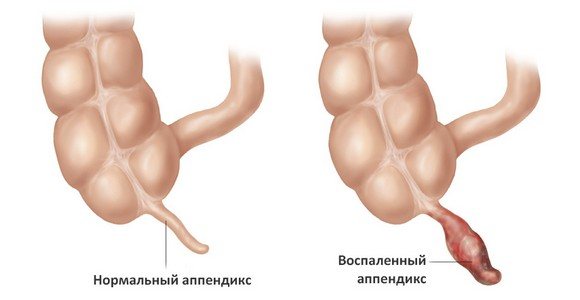
Inflammation of the appendix is a possible cause of stomach pain in a child
Children often complain of pain in the stomach, but this symptom hides not diseases, but physiological causes that are not related to pathologies.
If a child has a stomach ache, it is most likely due to:
- poor nutrition that is not suitable for the child’s age category;
- prolonged exposure to stressful situations that surround children everywhere - at home, in kindergarten or at school;
- the use of a large number of medications, in particular drugs such as antibiotics;
- bad habits - this only applies to teenagers;
- food allergies. In such cases, pain will occur after eating;
- overwork and lack of sleep.
On a note:
The lion's share of the most dangerous diseases, hidden under severe abdominal pain and, as a rule, requiring the intervention of a surgeon, are not accompanied by low-grade fever ! Fever is usually a “companion” of infections.
If you have the slightest doubt , call a doctor - do not delay seeking qualified help. No matter what “cases” await you, no matter how afraid your child is of doctors, call an ambulance without hesitation! It's better to be safe than sorry.
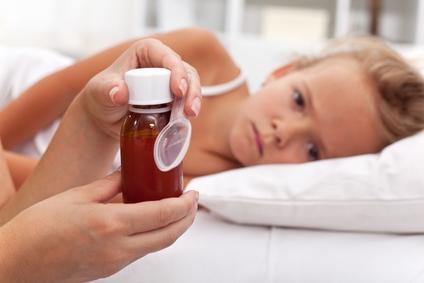
Help at home

If parents do not have a medical education and do not know about the causes of stomach pain in a child, then they cannot select painkillers on their own. This will distort the clinical picture of the pathology and create difficulties for doctors in making the correct diagnosis.
Before visiting the doctor, parents must follow the following rules:
- do not feed the child;
- give the baby a large amount of liquid (Regidron is possible), especially if abdominal pain is accompanied by loose stools and vomiting;
- control body temperature;
- do not apply heating pads to your stomach;
- do not do enemas.
If a child’s tummy suddenly hurts, the temperature rises, and the stool acquires an unpleasant, foul odor, this indicates an intestinal infection has begun. Pathology in children under 5 years of age is treated in a hospital due to the risk of dehydration.
Functional abdominal pain in a child - how to help him cope with the pain?
In children over 5 years old (from 8 to 15), in addition to the above, functional pain also occurs. They are usually referred to as pain that is completely unrelated to surgery or infection .
As a rule, even after a serious examination, the causes of such pain are simply not identified. But this does not mean that pain is a child’s invention so as not to go to school or not to put away toys. Children really suffer from them, and the nature of the pain can be compared to migraine .
What usually causes such pain?
- Reaction to overwork.
- Stress, nervous tension.
- Functional dyspepsia. In this case, the pain is similar to gastritis.
- Irritable bowel syndrome. A non-dangerous disease, manifested by periodic attacks in the abdomen, subsiding after using the toilet.
- Abdominal migraine. In this case, severe paroxysmal pain around the navel over time (note - as you grow older) transforms into migraine headaches. Associated symptoms include nausea and pallor, headache and photophobia.
How to help your child?
Functional pain in itself and does not pose any health risks. They also do not require specific treatment and go away on their own with age.
However, such children, of course, need special care:
- Diet. You can alleviate the child’s condition by increasing the diet of vegetables, fruits and dried fruits, and cereals.
- Medications. If the pain bothers your child greatly, you can use ibuprofen or paracetamol.
- Diary of pain. Recording observations will be useful for medical history and understanding “where the legs grow from.” You should record the period of pain (how long it lasts), the means of easing it (what you use to relieve it) and the situations in which the pain occurs.
- Calm and caring. Provide your child with an atmosphere at home in which he feels safe. Positive emotions are essential!
The site Colady.ru warns: self-medication can be dangerous to health and life! The diagnosis should only be made by a doctor after an examination. Therefore, if your child experiences severe abdominal pain, be sure to consult a specialist!





